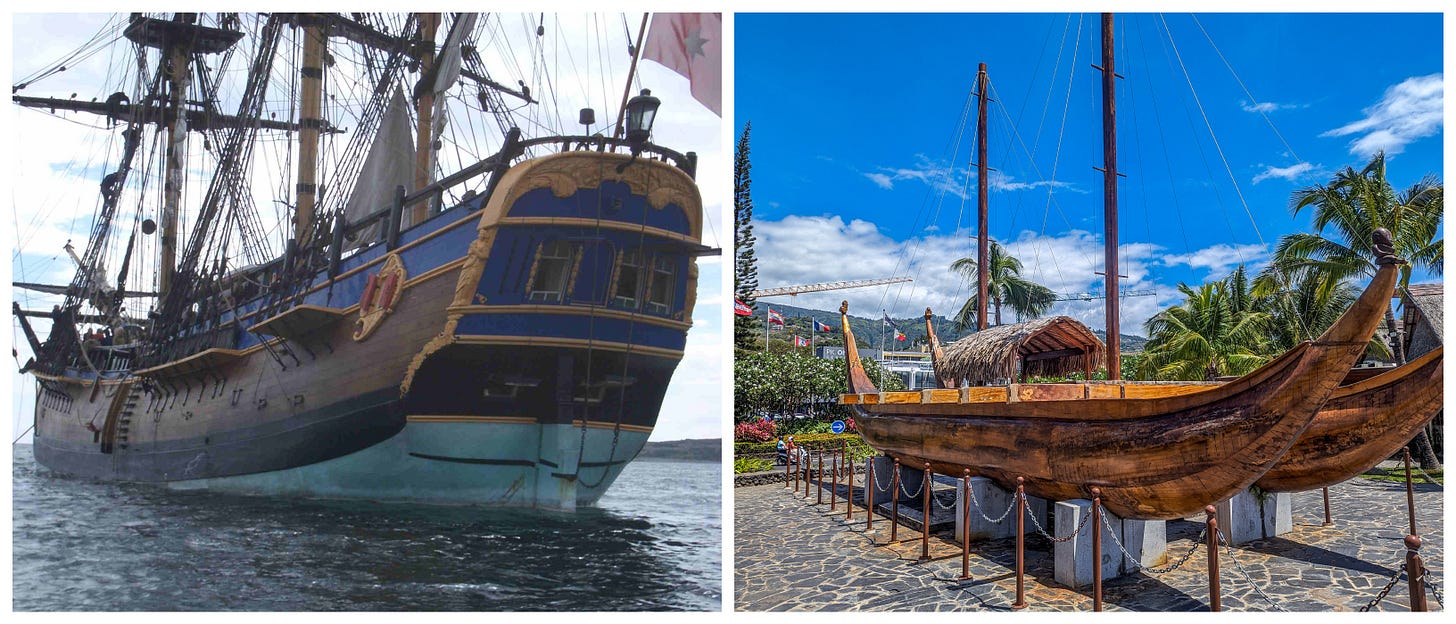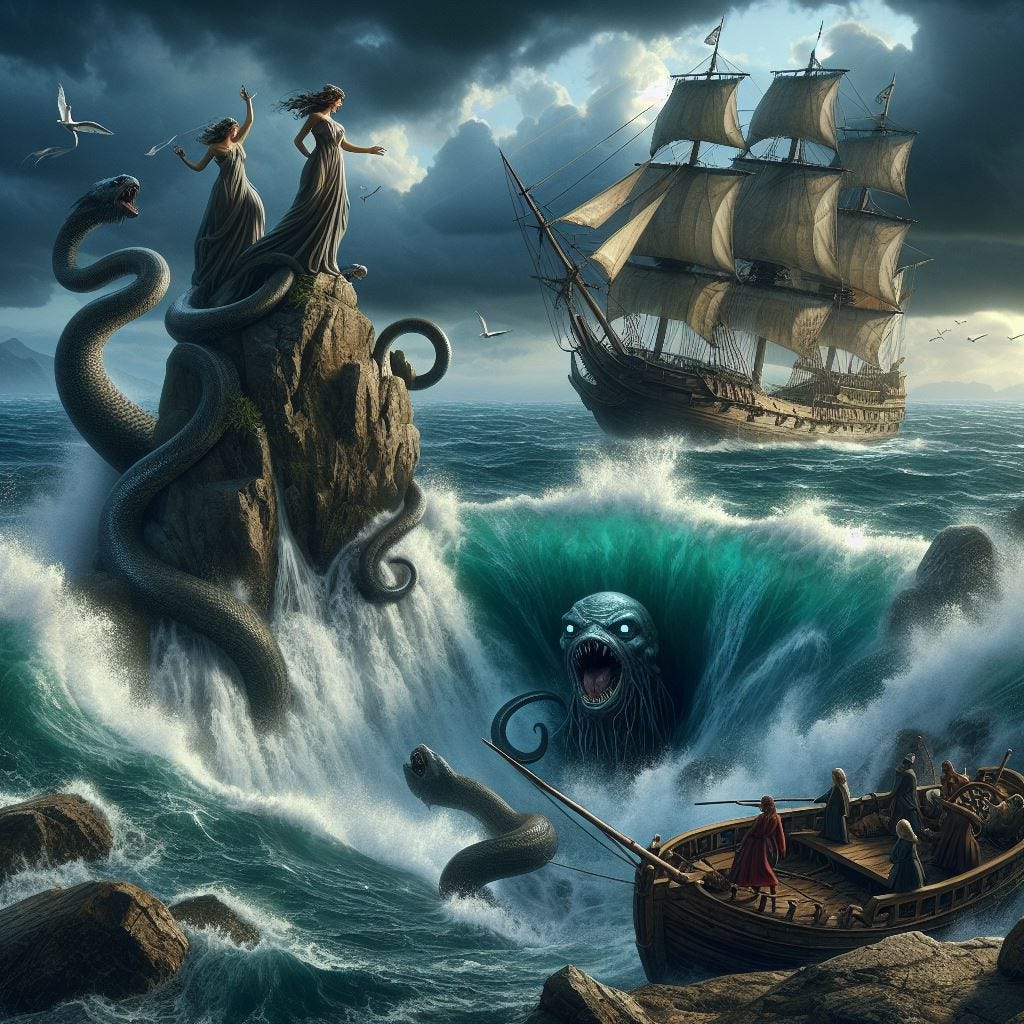The First Polynesians Crossed the Pacific Without an All-You-Can Eat Buffet
I crossed it on a cruise ship. But we made the exact same journey!
For the audio version of this article, read by the author, go here.
Brent and I recently took a 29-day cruise from Vancouver, Canada, to Sydney, Australia, and it reminded me how I’ve always been fascinated by remote places, especially distant islands far out in the middle of vast oceans.
In elementary school, I loved reading about the journeys of Hernán Cortés, Francisco Pizarro, and especially Ferdinand Magellan — the first person known to cross the Pacific Ocean.
Then there was Captain James Cook who — almost 250 years after Magellan — made three crossings of the Pacific.
How had Magellan, Cook, and the others managed to make such astonishing journeys in such small boats with technology that was primitive by today’s standards?
The terrible dangers they imagined — kraken, giant whirlpools, and the like — weren’t that much worse than the challenges they actually faced: hurricanes, rocky shoals, disease and injury, and running low on food and water.
Of course, humans had already explored the Pacific long before Europeans sailed into view and started naming and claiming things — and the Polynesians had done it in even smaller boats with technology that was even more primitive.

I was thinking about all of this as we set off on that cruise from Vancouver to Sydney: we’d be making much of the same journey as all those intrepid European explorers and the even-more-intrepid Polynesians.
On the boat, I read several books about the Pacific Ocean, and here are some facts I learned:
It covers more than thirty percent of the Earth’s entire surface and contains fifty percent of all the world’s saltwater.
It contains almost twice as much water as the planet’s next biggest ocean, the Atlantic.
You could fit all of the continents — plus another North America! — into the Pacific Ocean basin.
Its average depth is 4,000 meters, or 13,000 feet, and the deepest place on Earth is the Pacific’s Challenger Deep, which plunges downward more than 11,000 meters, or 36,000 feet. That’s eleven kilometers — or almost seven miles!
The distance between islands can be incredible. Our journey from Hawaiʻi to Tahiti was 2400 nautical miles. For us on that cruise ship, that meant a full five days at sea.
Day after day, I stood on the deck as we steadily plowed southward without a speck of land in sight. I never even saw another ship.
How the heck did the Polynesians even do this? I wondered.
I had my books, but I also had our various ports-of-call, and I was determined to learn the answer before we arrived in Australia.
I knew Honolulu’s Bishop Museum had an enormous collection of Polynesian artifacts and historical displays, so this is where I started my investigation.
Keep reading with a 7-day free trial
Subscribe to Brent and Michael Are Going Places to keep reading this post and get 7 days of free access to the full post archives.



